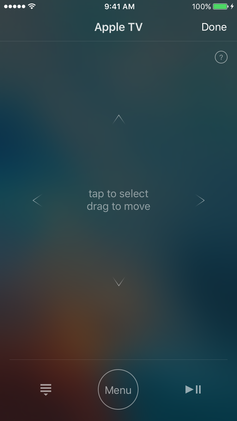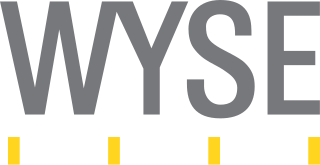
Citrix Systems, Inc. is an American multinational cloud computing and virtualization technology company that provides server, application and desktop virtualization, networking, software as a service (SaaS), and cloud computing technologies. Citrix claims that their products are used by over 400,000 clients worldwide, including 99% of the Fortune 100 and 98% of the Fortune 500.
Independent Computing Architecture (ICA) is a proprietary protocol for an application server system, designed by Citrix Systems. The protocol lays down a specification for passing data between servers and clients, but is not bound to any one platform. Citrix's ICA is an alternative to Microsoft's Remote Desktop Protocol (RDP).
The landscape for instant messaging involves cross-platform instant messaging clients that can handle one or multiple protocols. Clients that use the same protocol can typically federate and talk to one another. The following table compares general and technical information for cross-platform instant messaging clients in active development, each of which have their own article that provide further information.

Desktop virtualization is a software technology that separates the desktop environment and associated application software from the physical client device that is used to access it.

GoTo Meeting, previously known as GoToMeeting, is a web conferencing tool developed by GoTo. This software facilitates online meeting, desktop sharing, and video conferencing software package that enables the user to meet with other participants via the Internet in real time. In late 2015, Citrix announced plans to spin off the GoTo Meeting business as a standalone subsidiary with a market value around $4 billion. In July 2016, Citrix and LogMeIn disclosed their agreement to merge the GoTo line of products.

ShareFile is a secure content collaboration, file sharing and sync software that supports all the document-centric tasks and workflow needs of small and large businesses. The company also offers cloud-based or on-premises storage, virtual data rooms and client portals. ShareFile is owned by Citrix Systems.

iTunes Remote is a software application developed by Apple Inc. for iOS devices that allows for remote control of Apple TV or iTunes library in an area with Wi-Fi connectivity using the proprietary Digital Audio Control Protocol (DACP). It is currently available as a free download from the App Store for iOS devices such as iPhone, iPod Touch, iPad, and Apple Watch.
A Nirvana Phone was a marketing phrase coined by Citrix for a smartphone that could be docked with external displays and keyboards to create an alternative desktop or laptop computer system. It was to define a new category of mobile device with a capability beyond a conventional smartphone computer. The NirvanaPhone provides the processor, storage media, display adapter, communication channels, and operating system. The docking station provides power, and connectivity. To be useful the NirvanaPhone differs from a simple smartphone by having significant processing power, video output at high resolution, plus keyboard and mouse input. A smartphone is generally accepted as a device that has both mobile phone capability as well as an operating system that can run applications such as email, web browser, media player and personal organizers. The NirvanaPhone adds external monitor capability which could be a computer monitor, an HDTV, or a video projector. The dock could be a cradle, cable or a wireless connection. This allows the NirvanaPhone to run applications that can utilize a full-sized display for better readability or collaboration. Or in combination with a keyboard and mouse, perhaps using Bluetooth, the NirvanaPhone could act as a thin client connected to a virtual desktop for business use.
XenClient is a discontinued desktop virtualization product developed by Citrix. It runs virtual desktops on endpoint devices. The product reached end of-life in December 2016. XenClient runs both operating system and applications locally in the end users device, without the need for a connection to a data center, which is why it is used in environments with limited connectivity, disconnected operation on laptops, and other scenarios where local execution is desired while keeping management centralized.

Wyse Technology, Inc., or simply Wyse, was an independent American manufacturer of cloud computing systems. Wyse are best remembered for their video terminal line introduced in the 1980s, which competed with the market-leading Digital. They also had a successful line of IBM PC compatible workstations in the mid-to-late 1980s. But starting late in the decade, Wyse were outcompeted by companies such as eventual parent Dell. Current products include thin client hardware and software as well as desktop virtualization solutions. Other products include cloud software-supporting desktop computers, laptops, and mobile devices. Dell Cloud Client Computing is partnered with IT vendors such as Citrix, IBM, Microsoft, and VMware.
A mobile application or app is a computer program or software application designed to run on a mobile device such as a phone, tablet, or watch. Mobile applications often stand in contrast to desktop applications which are designed to run on desktop computers, and web applications which run in mobile web browsers rather than directly on the mobile device.

2X Software was a Maltese software company specializing in virtual desktop, application virtualization, application delivery, Remote Desktop Services, remote access and Mobile Device Management. On 25 February 2015, 2X Software was acquired by Parallels, Inc. The 2X products, Remote Application Server and Mobile Device Management, are now included in Parallels' offering.
A mobile workspace is a user's portable working environment that gives them access to the applications, files and services they need to do their job no matter where they are.
Remote mobile virtualization, like its counterpart desktop virtualization, is a technology that separates operating systems and applications from the client devices that access them. However, while desktop virtualization allows users to remotely access Windows desktops and applications, remote mobile virtualization offers remote access to mobile operating systems such as Android.
Citrix Endpoint Management is an on-premises and cloud-based software developed by Citrix Systems that provides unified endpoint management for corporate- and employee-owned devices for business use. It is part of the Citrix Workspace platform.
Citrix Workspace is a digital workspace software platform developed by Citrix Systems. Launched in 2018, it is Citrix Systems' flagship product. Citrix Workspace is an information retrieval service where users can access programs and files from a variety of sources through a central application or a Web browser. In addition to Citrix Virtual Apps and Desktops, Citrix Workspace services include Citrix Endpoint Management, Citrix Content Collaboration, Citrix Access Control, microapp capabilities, usage analytics, and single sign-on capabilities to SaaS and Web apps.
Citrix Virtual Apps is an application virtualization software produced by Citrix Systems that allows Windows applications to be accessed via individual devices from a shared server or cloud system.
Citrix Cloud is a cloud management platform that allows organizations to deploy cloud-hosted desktops and apps to end users. It was developed by Citrix Systems and released in 2015.
Citrix Virtual Desktops is a desktop virtualization product.







